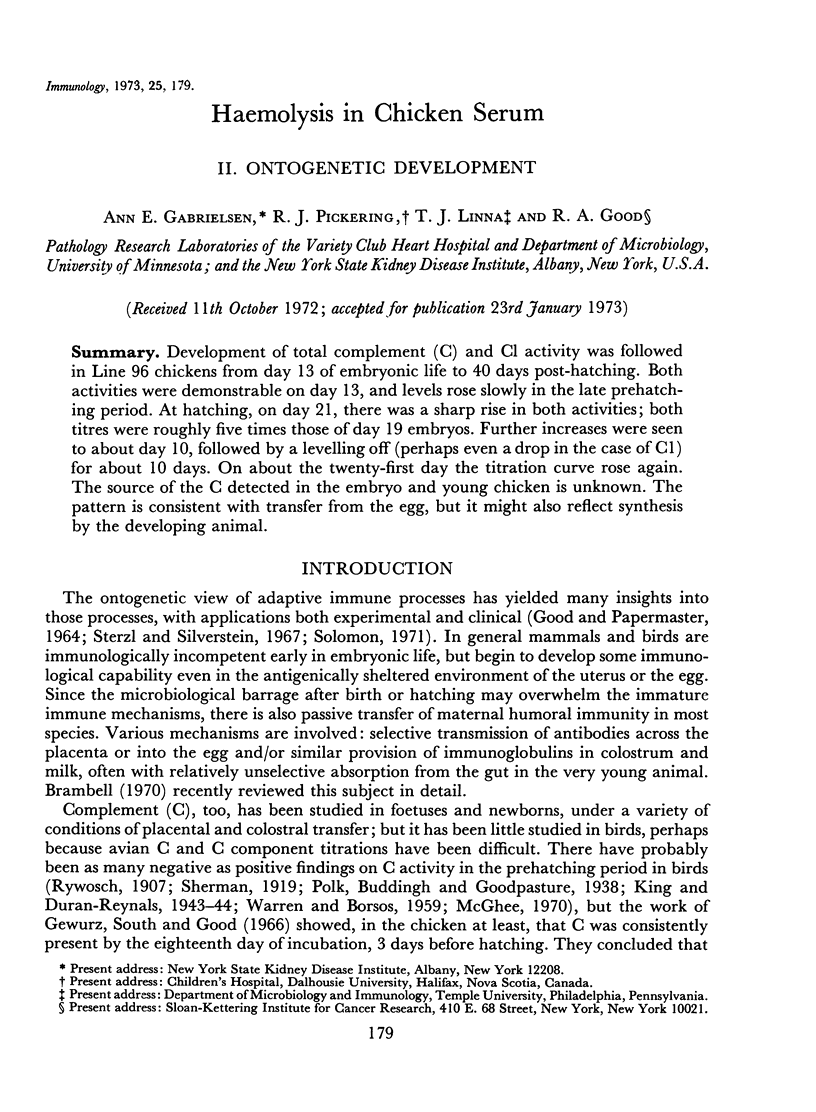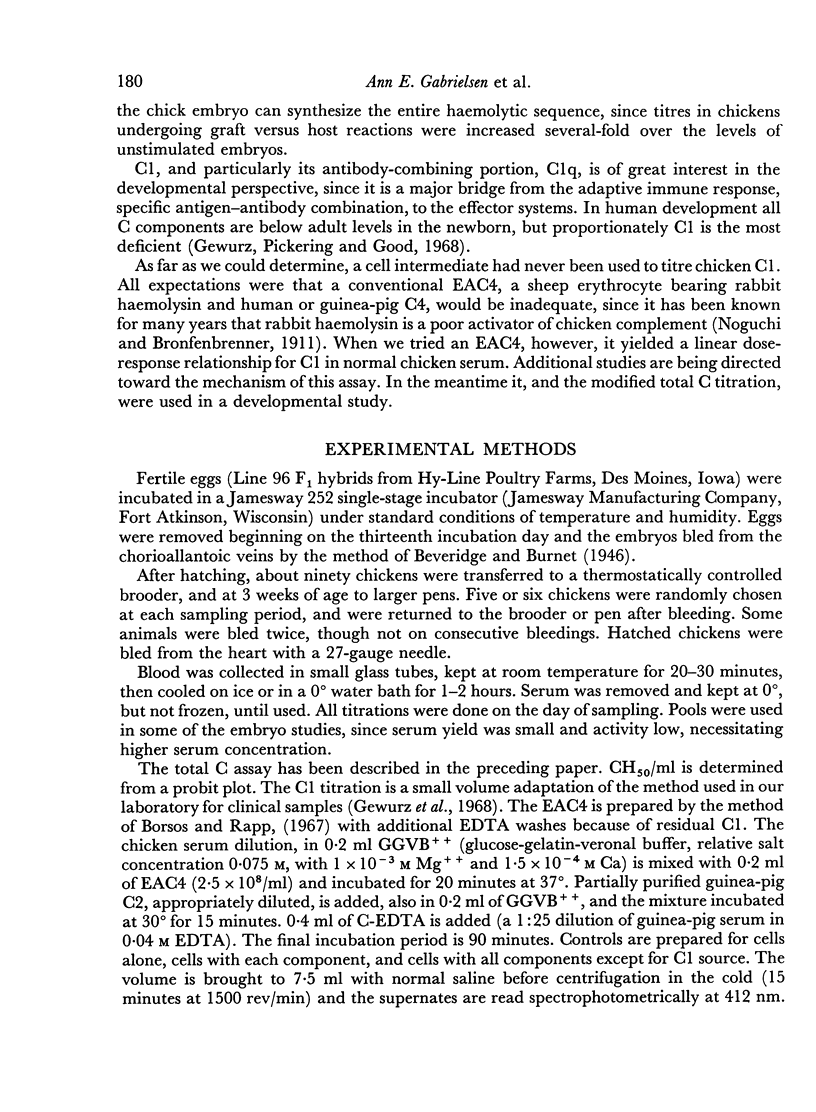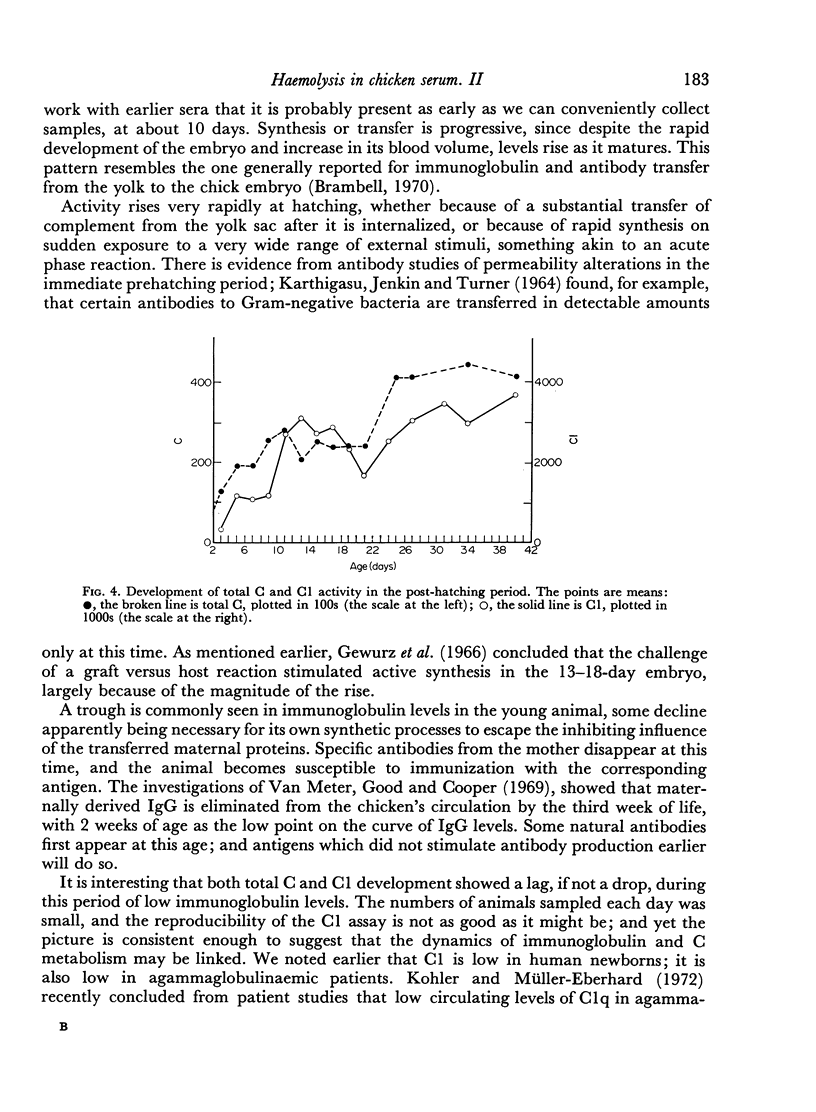Abstract
Development of total complement (C) and C1 activity was followed in Line 96 chickens from day 13 of embryonic life to 40 days post-hatching. Both activities were demonstrable on day 13, and levels rose slowly in the late prehatching period. At hatching, on day 21, there was a sharp rise in both activities; both titres were roughly five times those of day 19 embryos. Further increases were seen to about day 10, followed by a levelling off (perhaps even a drop in the case of C1) for about 10 days. On about the twenty-first day the titration curve rose again. The source of the C detected in the embryo and young chicken is unknown. The pattern is consistent with transfer from the egg, but it might also reflect synthesis by the developing animal.
Full text
PDF





Selected References
These references are in PubMed. This may not be the complete list of references from this article.
- Borsos T., Rapp H. J. Immune hemolysis: a simplified method for the preparation of EAC'4 with guinea pig or with human complement. J Immunol. 1967 Aug;99(2):263–268. [PubMed] [Google Scholar]
- GOOD R. A., PAPERMASTER B. W. ONTOGENY AND PHYLOGENY OF ADAPTIVE IMMUNITY. Adv Immunol. 1964;27:1–115. doi: 10.1016/s0065-2776(08)60706-3. [DOI] [PubMed] [Google Scholar]
- Gewurz H., Pickering R. J., Good R. A. Complement and complement component activities in diseases associated with repeated infections and malignancy. Int Arch Allergy Appl Immunol. 1968;33(4):368–388. doi: 10.1159/000230053. [DOI] [PubMed] [Google Scholar]
- Gewurz H., South M. A., Good R. A. The ontogeny of complement activity. Complement titers in the developing chick embryo during graft-versus-host reactions. Proc Soc Exp Biol Med. 1966 Dec;123(3):718–721. doi: 10.3181/00379727-123-31586. [DOI] [PubMed] [Google Scholar]
- KARTHIGASU K., JENKIN C. R., TURNER K. J. THE NATURE OF THE OPSONINS IN ADULT HEN SERUM AND DEVELOPING CHICK EMBRYOS TO CERTAIN GRAM-NEGATIVE BACTERIA. Aust J Exp Biol Med Sci. 1964 Aug;42:499–510. doi: 10.1038/icb.1964.47. [DOI] [PubMed] [Google Scholar]
- Kohler P. F., Müller-Eberhard H. J. Metabolism of human C1q. Studies in hypogammaglobulinemia, myeloma, and systemic lupus erythematosus. J Clin Invest. 1972 Apr;51(4):868–875. doi: 10.1172/JCI106881. [DOI] [PMC free article] [PubMed] [Google Scholar]
- Polk A., Buddingh G. J., Goodpasture E. W. An experimental study of complement and hemolytic amboceptor introduced into chick embryos. Am J Pathol. 1938 Jan;14(1):71–86. [PMC free article] [PubMed] [Google Scholar]
- Sterzl J., Silverstein A. M. Developmental aspects of immunity. Adv Immunol. 1967;6:337–459. doi: 10.1016/s0065-2776(08)60525-8. [DOI] [PubMed] [Google Scholar]
- Van Meter R., Good R. A., Cooper M. D. Ontogeny of circulating immunoglobulin in normal, bursectomized and irradiated chickens. J Immunol. 1969 Feb;102(2):370–374. [PubMed] [Google Scholar]
- WARREN L. G., BORSOS T. Studies on immune factors occurring in sera of chickens against the crithidia stage of Trypanosoma cruzi. J Immunol. 1959 Jun;82(6):585–590. [PubMed] [Google Scholar]


